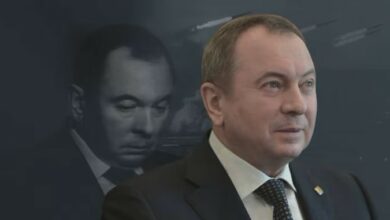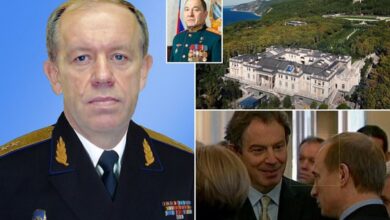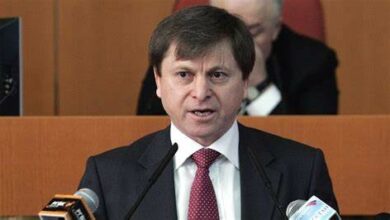Russian Scientist Grigory Klinishov Behind Hydrogen Bomb Dies Aged 92
Russian scientist Grigory Klinishov, born on October 30, 1930, and believed to have passed away around June 17, 2023, was a distinguished Soviet-Russian physicist who left an indelible mark on the field of nuclear physics. He is renowned for his outstanding contributions and was honored with the prestigious Lenin Prize, a testament to his remarkable achievements.
One of Klinishov’s most significant and enduring accomplishments was his pivotal role as one of the architects behind the development of the Soviet hydrogen bomb RDS-37. This iconic weapon, which held immense strategic importance during the Cold War era, was a testament to Russian scientist Klinishov’s profound expertise in nuclear physics and his ability to work on cutting-edge, high-stakes projects.
In essence, Russian scientist Klinishov’s legacy extends far beyond his personal accolades and awards. His work not only advanced the frontiers of nuclear science but also played a critical role in shaping the geopolitical landscape of the time. His dedication to his craft and his pivotal role in the development of the RDS-37 hydrogen bomb solidify his position as a luminary figure in the annals of Soviet scientific history.
About Russian Scientist Grigory Klinishov
Born in the year 1930, Russian scientist Grigory made significant contributions to the field of thermonuclear weaponry, particularly by designing different types of advanced thermonuclear warheads intended for future-generation bombs. Notably, he played a pivotal role in the creation of the two-stage thermonuclear bomb known as RDS-37.
RDS-37, which underwent its inaugural test in November 1955 at a testing facility located in Kazakhstan, emerged as a direct response to the United States’ successful testing of its first hydrogen bomb. The detonation of RDS-37 resulted in a catastrophic shock wave that wreaked havoc on the nearby villages, causing numerous injuries and widespread destruction.
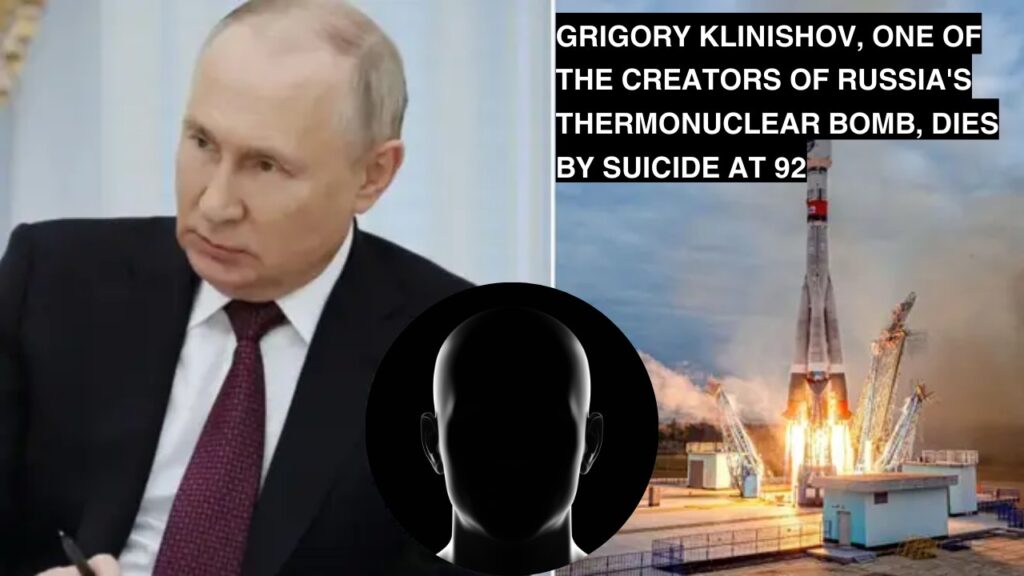
Grigory expertise in thermonuclear technology distinguished his career, with his work on RDS-37 standing out as a crucial turning point in the ongoing Cold War arms race between superpowers. His innovative contributions to developing advanced thermonuclear warheads further underscore his significance in the realm of nuclear weaponry.
His Career
In 1954, scientist Klinishov successfully completed his education at the Moscow Engineering Physics Institute and earned the academic distinction of being a Candidate of the Physical and Mathematical Sciences. Following his graduation, he embarked on a pivotal career path within the realm of nuclear research and development.
Specifically, scientist Klinishov was assigned to the KB-11, officially known as the Constructor Bureau-11, which was operated under the jurisdiction of the Ministry of Medium Machine Building. This institution, which would later be renamed the All-Russian Scientific Research Institute of Experimental Physics, was primarily responsible for the complex task of advancing the field of nuclear and thermonuclear weaponry. Within this organisation, Klinishov served as an engineer, focusing his efforts within the theoretical department under the guidance of the esteemed scientist Andrei Sakharov.
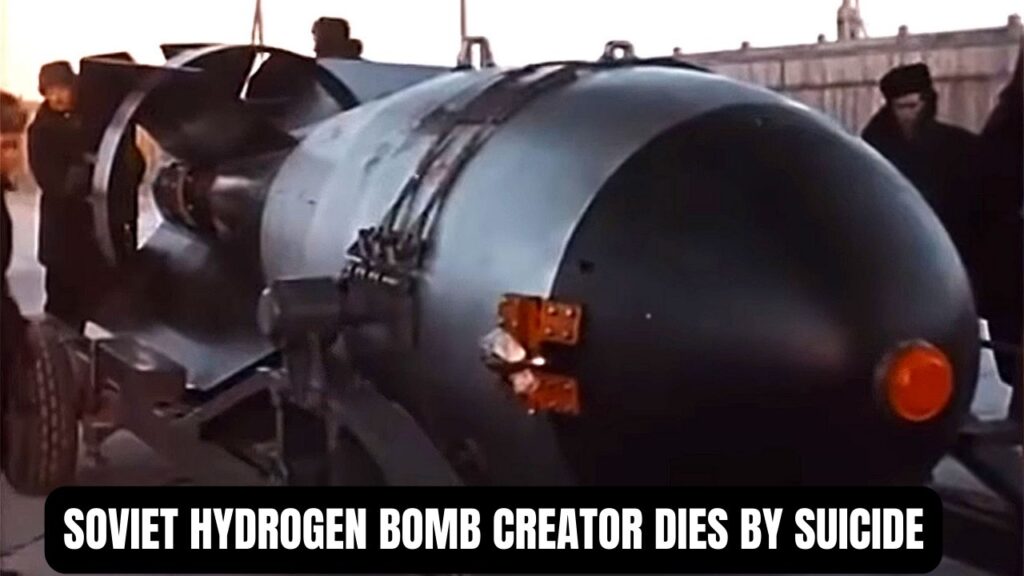
During his tenure at KB-11, Russian Grigory Klinishov played a crucial role in the development of the detonation mechanism for the Soviet hydrogen bomb known as RDS-37. This groundbreaking achievement marked a significant milestone in the Soviet Union’s nuclear arsenal. The RDS-37 was subsequently subjected to a pivotal test on November 22, 1955, at the Semipalatinsk testing site.
Grigory Klinishov’s expertise and contributions extended beyond the RDS-37 project. He also dedicated his skills and knowledge to the development of various types of thermonuclear charges, laying the foundation for next-generation bombs. His work in this field underscored his significant role in advancing the Soviet Union’s capabilities in the realm of nuclear weaponry and solidified his legacy as a key figure in the history of nuclear science and engineering.
Story of his death.
A renowned nuclear physicist who played a pivotal role in the development of Russia’s inaugural hydrogen bomb was discovered lifeless in a Moscow apartment this week, with indications pointing to suicide as the cause of death. Russian scientist Grigory Klinishov, aged 92 at the time of his demise, left behind a heartfelt suicide note, expressing remorse to his family and disclosing his struggles in coping with deteriorating health and the profound loss of his wife. These details were reported by Russian media, which cited undisclosed sources within the law enforcement community.
The contents of the alleged note beyond the apology and confession remain unclear at this moment. This tragic news comes at a time of heightened apprehension regarding a potential nuclear crisis in Ukraine. Ukrainian President Volodymyr Zelensky accused Moscow of plotting to disrupt Europe’s largest nuclear power plant, thereby unleashing the threat of radiation.
The grim discovery of Russian Scientist Grigory Klinishov’s lifeless body was made by his 67-year-old daughter in the apartment they shared. Despite initial assessments pointing towards suicide, investigators have initiated an official inquiry into his death, presumably to ensure a thorough examination of the circumstances surrounding this unfortunate event.
Mysterious Deaths Among Russian Elites Amid Ukraine Conflict
Wagner Group Leader Yevgeny Prigozhin’s Recent Death Sparks Concern
Yevgeny Prigozhin’s Tragic Plane Crash:
Yevgeny Prigozhin, the leader of the Wagner Group, met a tragic end in a plane crash while traveling between Moscow and Saint Petersburg. His death came shortly after a mutiny by his mercenaries in June, which strained his relationship with President Putin.
Speculation Surrounding Prigozhin’s Death:
Many speculate that Prigozhin’s death might be a political assassination, signaling a warning to Russia’s elites ahead of the 2024 elections. Ukrainian presidential aide Mykhailo Podolyak shares this sentiment.
Putin’s Response:
President Putin offered condolences and acknowledged Prigozhin’s contribution to fighting in Ukraine. He described Prigozhin as a complex figure with both achievements and mistakes. Several Russian elites have died under mysterious circumstances in the past year, raising concerns and conspiracy theories.
Deaths in Early 2022:
The string of unusual deaths began in early 2022, just before Putin’s invasion of Ukraine. Notable figures like Leonid Shulman, Alexander Tyulakov, Igor Nosov, and Mikhail Watford were among those who passed away.
Bizarre Deaths:
Some deaths took on bizarre and perplexing forms, such as Vasily Melnikov’s family stabbing and Vladislav Avayev’s murder-suicide. Alexander Subbotin’s death, involving a shaman and Jamaican voodoo rituals, stood out as particularly unusual.
Continued Deaths:
The pattern of elite deaths persisted into late 2022, with Pavel Antonov’s fatal fall from a hotel window in India. Several of these individuals had voiced criticism of Putin’s actions in Ukraine.
Despite these puzzling incidents, there is no clear and definitive explanation for these deaths. Many have noted the connection between the outspokenness of these elites and their unfortunate fates.
The death of Yevgeny Prigozhin, along with the string of mysterious deaths among Russian elites, remains a topic of intrigue and speculation, leaving many questions unanswered about the circumstances surrounding these individuals’ demises.
Other mysterious Russian deaths or attacks surrounding Putin
Boris Nemtsov
In 2015, Boris Nemtsov, a prominent Russian opposition figure known for his strong criticism of the Putin administration, was fatally shot in an assault that took place on a bridge within sight of the Kremlin.
- He met his demise just a few days prior to his scheduled leadership of an uncommon public demonstration against Russia’s takeover of Ukraine’s Crimean area and its backing of separatist activities in eastern Ukraine’s Donbas region.
- The Kremlin disavowed any participation, while in 2017, a Russian court found five individuals guilty of Nemtsov’s murder in a trial that his family labeled as an attempt to conceal the truth.
- In the years that followed, it came to light that a government agent working with a group that carried out assassinations had been closely watching him in the months before his death.
Alexei Navalny
The leader of the opposition, Navalny, who is currently incarcerated for approximately three decades, was poisoned in August 2020 using a potent nerve agent known as Novichok, a product of Soviet Union’s research and development.
- The Kremlin claimed no responsibility, but later inquiries conducted by Bellingcat revealed that the individuals behind the assault were affiliated with Russia’s Federal Security Service (FSB) and that the decision to poison him had come from the highest levels of the Kremlin.
Alexander Litvinenko:
In 2006, Litvinenko, a former KGB agent turned whistleblower, passed away in the United Kingdom as a result of poisoning with a scarce and extremely radioactive substance known as polonium-210.
- Once more, Russia has refused any participation, yet both the United Kingdom and the European Court of Human Rights have reached the determination that Russia likely played a role. The UK investigation even went as far as suggesting that Putin “likely sanctioned” the assassination of Litvinenko.
- One of the indications suggesting the Kremlin’s participation is the observation that nearly all the global supply of polonium-210 originates from state-managed nuclear facilities in Russia, where nuclear authorities have emphasized strict oversight over access to this element.
Sergei Skripal:
In 2018, Skripal, a former Russian intelligence operative residing in the United Kingdom, along with his daughter, fell victim to an assault in Salisbury. They were targeted with a nerve agent that bore a resemblance to the substance employed in the attack against Navalny.
- Skripal and his daughter managed to survive, but a British citizen lost their life, and several others were harmed when they encountered a perfume container suspected to be linked to the incident.
- The United States, the United Kingdom, and several other countries have jointly determined that individuals affiliated with the Russian military intelligence agency were responsible for the poisonings. Furthermore, the United Kingdom has formally accused three members of this agency in connection with the incidents.
Yuri Shchekochikhin:
In July 2003, Russian investigative journalist and liberal lawmaker Shchekochikhin experienced a sudden illness and passed away. Doctors at a hospital associated with the Kremlin stated at the time that his cause of death was attributed to a severe allergic reaction.
- His family members have reported that Shchekochikhin endured a harrowing 12-day period characterized by excruciating pain, during which his skin progressively peeled off, his hair fell out, and his organs suffered successive failures.
- When they requested access to Shchekochikhin’s medical records, medical professionals informed his family that these documents were being held by prosecutors, citing them as a “medical secret.” This was in relation to an investigation that would not be initiated until several years later.
- In the years leading up to his demise, Shchekochikhin had published investigative reports exposing a smuggling operation, money laundering activities, and a corruption scandal involving high-ranking FSB (Federal Security Service) agents.
- Additionally, he had been delving into the potential involvement of the FSB in the 1999 Moscow apartment bombings, an event that played a part in triggering the Second Chechen War.
Anna Politkovskaya
In October 2006, Anna Politkovskaya, a Russian journalist and advocate for human rights, was fatally shot in her residence located in Moscow.
- She had documented human rights abuses during the Second Chechen War and authored a book in 2004, asserting that Putin, via the FSB, was suppressing civil liberties to steer the nation toward a Soviet-style dictatorship before she passed away.
- In 2014, a Moscow court convicted five men for her murder, but the identity of the individual who ordered her assassination was never determined.
Multiple Russian oligarchs and executives also died :
According to a report from The New York Times, a number of prominent Russian oligarchs and high-ranking executives have met untimely deaths in perplexing circumstances, including suicides and accidents, since the commencement of Russia’s invasion of Ukraine.
- Ravil Maganov, who held the position of Chairman of the Board at Lukoil, a prominent Russian conglomerate, experienced a tragic and unexpected demise in September 2022. This unfortunate incident occurred when he fell from a hospital window in Moscow. The circumstances surrounding his death garnered significant attention and controversy in Russia and beyond.
- Russian media initially reported that Ravil Maganov had taken his own life, implying that it was a case of suicide. However, in response to these reports, Lukoil released an official statement following his passing. According to the company’s statement, Maganov did not succumb to suicide but rather passed away as a result of a severe illness.
The sudden and perplexing nature of Maganov’s death, along with the contrasting narratives presented by the media and Lukoil, added an extra layer of complexity to this tragic event. It raised questions and speculation within both the business community and the public, leaving many seeking further information and clarity about the circumstances surrounding the loss of a key figure in one of Russia’s largest private corporations.




